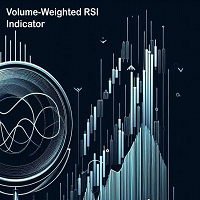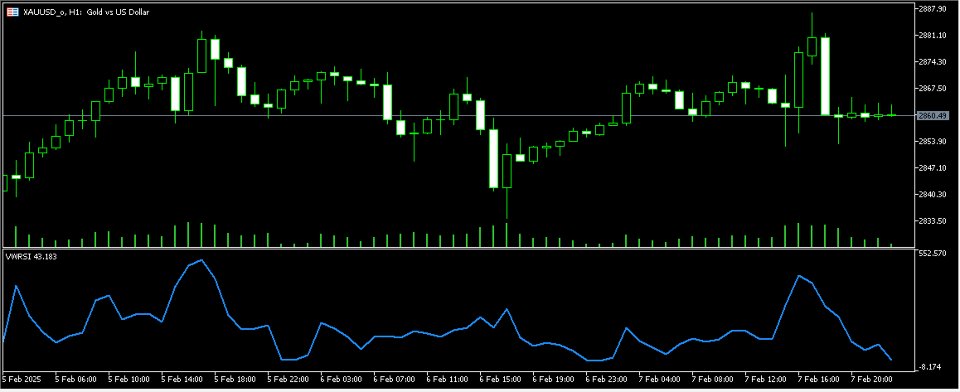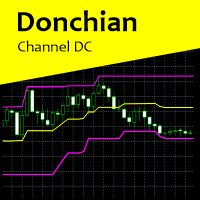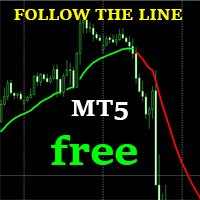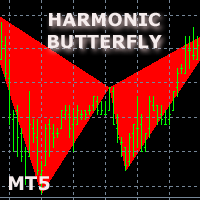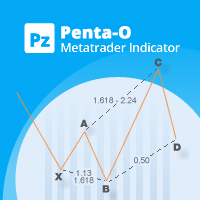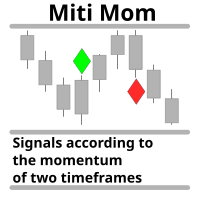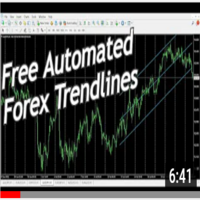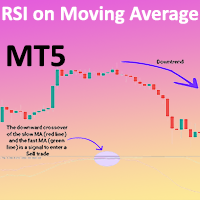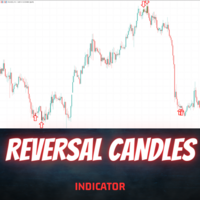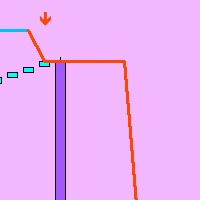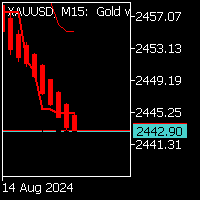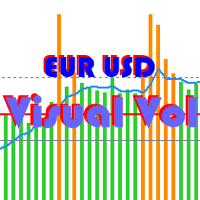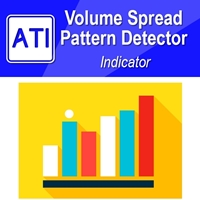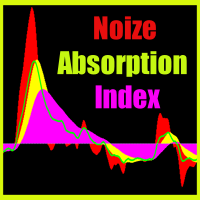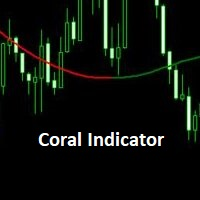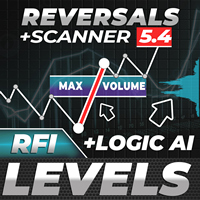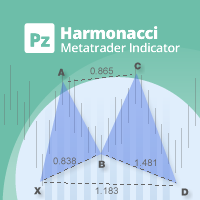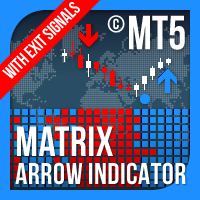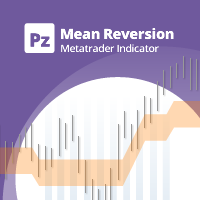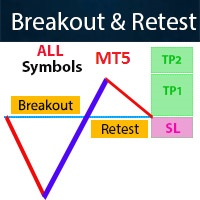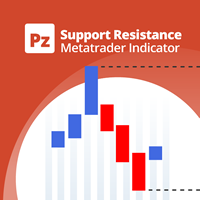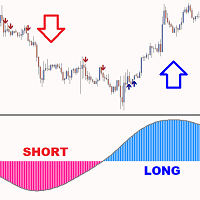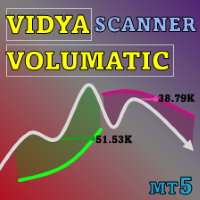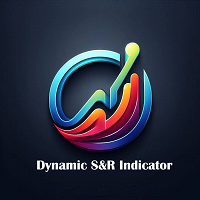Volume Weighted RSI
- Indicatori
- Irvan Trias Putra
- Versione: 1.0
- Attivazioni: 10
The Volume-Weighted RSI (VW-RSI) is a powerful technical analysis tool that combines the traditional Relative Strength Index (RSI) with volume data to provide a more nuanced view of market conditions. By incorporating volume into the RSI calculation, the VW-RSI offers a unique perspective on price momentum, helping traders identify potential reversals, confirm trends, and filter out false signals.
Below is a detailed explanation of the VW-RSI, its features, and why it stands out as a unique indicator.
1. What is VW-RSI?
The VW-RSI is a modified version of the classic RSI indicator. While the standard RSI measures the magnitude of recent price changes to evaluate overbought or oversold conditions, the VW-RSI adds a volume-weighted component to the calculation. This means that the RSI value is adjusted based on the trading volume during the period, giving more weight to price movements that occur with higher volume.
2. How Does VW-RSI Work?
The VW-RSI calculation involves two main steps:
a. Calculate the Classic RSI
The RSI is calculated using the following formula:
R S I = 100 − ( 100 1 + R S ) RSI=100−(1+RS100)Where:
-
R S RS (Relative Strength) = Average Gain / Average Loss over a specified period (default is 14).
b. Incorporate Volume Weighting
The RSI value is then adjusted by the volume data. The formula for VW-RSI is:
V W - R S I = R S I × ( Current Volume Volume MA ) VW-RSI=RSI×(Volume MACurrent Volume)Where:
-
Current Volume: The trading volume for the current candle.
-
Volume MA: The moving average of volume over a specified period (default is 14).
This adjustment ensures that price movements accompanied by higher volume have a greater impact on the VW-RSI value.
3. Key Features of VW-RSI
a. Volume Confirmation
One of the most significant advantages of VW-RSI is its ability to confirm price movements using volume. In technical analysis, volume is often considered a leading indicator of market strength. By incorporating volume into the RSI, the VW-RSI helps traders:
-
Confirm the validity of a trend.
-
Identify potential reversals when volume diverges from price.
b. Reduced False Signals
The standard RSI can sometimes generate false signals, especially in choppy or low-volume markets. The VW-RSI filters out these false signals by giving more weight to price movements that occur with significant volume. This makes it particularly useful in volatile markets.
c. Customizable Periods
Like the classic RSI, the VW-RSI allows traders to customize the lookback period for both the RSI and the volume moving average. This flexibility enables traders to adapt the indicator to different timeframes and trading strategies.
d. Overbought/Oversold Levels
The VW-RSI retains the traditional overbought (typically 70) and oversold (typically 30) levels of the RSI. However, these levels are now more reliable because they are adjusted for volume. For example:
-
A VW-RSI reading above 70 with high volume confirms a strong overbought condition.
-
A VW-RSI reading below 30 with high volume confirms a strong oversold condition.
e. Divergence Detection
The VW-RSI is highly effective at detecting divergences between price and momentum. For example:
-
Bullish Divergence: Price makes a lower low, but VW-RSI makes a higher low, indicating weakening selling pressure.
-
Bearish Divergence: Price makes a higher high, but VW-RSI makes a lower high, indicating weakening buying pressure.
4. Why is VW-RSI Unique?
a. Combines Price and Volume
While most momentum indicators focus solely on price, the VW-RSI integrates volume, which is a critical component of market analysis. This combination provides a more holistic view of market conditions.
b. Adaptive to Market Conditions
The VW-RSI dynamically adjusts to changes in volume, making it more responsive to shifts in market sentiment. This adaptability is particularly useful in fast-moving markets.
c. Enhanced Trend Confirmation
By weighting the RSI with volume, the VW-RSI provides stronger confirmation of trends. For example:
-
In an uptrend, rising VW-RSI values with increasing volume confirm bullish momentum.
-
In a downtrend, falling VW-RSI values with increasing volume confirm bearish momentum.
d. Versatility
The VW-RSI can be used across various asset classes (stocks, forex, commodities, etc.) and timeframes (intraday, swing, long-term). It is also compatible with other technical indicators, such as moving averages, Bollinger Bands, and MACD.
5. Practical Applications of VW-RSI
a. Trend Identification
-
Uptrend: VW-RSI remains above 50 with increasing volume.
-
Downtrend: VW-RSI remains below 50 with increasing volume.
b. Overbought/Oversold Conditions
-
Overbought: VW-RSI above 70 with high volume suggests a potential reversal or pullback.
-
Oversold: VW-RSI below 30 with high volume suggests a potential bounce or reversal.
c. Divergence Trading
-
Bullish Divergence: Enter long positions when VW-RSI shows higher lows while price makes lower lows.
-
Bearish Divergence: Enter short positions when VW-RSI shows lower highs while price makes higher highs.
d. Volume Breakouts
-
Use VW-RSI to confirm breakouts. For example, a breakout above a resistance level with a high VW-RSI and increasing volume confirms a strong bullish signal.
6. Comparison with Classic RSI
| Feature | Classic RSI | VW-RSI |
|---|---|---|
| Volume Integration | No | Yes |
| False Signals | More prone to false signals | Reduced false signals |
| Trend Confirmation | Relies solely on price | Confirms trends with volume |
| Divergence Detection | Effective | Enhanced with volume confirmation |
| Adaptability | Less adaptive to market conditions | Highly adaptive |
7. Limitations of VW-RSI
-
Volume Data Quality: The accuracy of VW-RSI depends on the quality of volume data. In forex markets, where volume is not centralized, this can be a limitation.
-
Lagging Nature: Like all momentum indicators, VW-RSI is lagging and may not predict sudden market moves.
-
Complexity: The additional volume component may make it slightly more complex for beginners compared to the classic RSI.
8. Conclusion
The Volume-Weighted RSI (VW-RSI) is a sophisticated and versatile indicator that enhances the traditional RSI by incorporating volume data. Its unique ability to combine price momentum with volume confirmation makes it a valuable tool for traders seeking to improve their market analysis and decision-making. Whether you're a day trader, swing trader, or long-term investor, the VW-RSI can help you identify trends, confirm signals, and filter out noise in the market.
Trading Strategy Using Volume-Weighted RSI (VW-RSI) for Divergence Trading
One of the most effective ways to use the Volume-Weighted RSI (VW-RSI) is through divergence trading. Divergence occurs when the price of an asset moves in the opposite direction of the VW-RSI, signaling a potential reversal in the current trend. Below is a detailed explanation of how to define and implement a divergence trading strategy using the VW-RSI.
1. What is Divergence?
Divergence is a powerful concept in technical analysis that occurs when the price of an asset moves in one direction, but the indicator (in this case, VW-RSI) moves in the opposite direction. This discrepancy often signals a weakening trend and a potential reversal.
There are two types of divergence:
-
Bullish Divergence: Occurs when the price makes a lower low, but the VW-RSI makes a higher low. This suggests that selling pressure is weakening, and a bullish reversal may be imminent.
-
Bearish Divergence: Occurs when the price makes a higher high, but the VW-RSI makes a lower high. This suggests that buying pressure is weakening, and a bearish reversal may be imminent.
2. Why Use VW-RSI for Divergence?
The VW-RSI adds a volume-weighted component to the classic RSI, making it more reliable for divergence trading. Volume acts as a confirmation tool, ensuring that the divergence signals are backed by significant trading activity. This reduces the likelihood of false signals and increases the accuracy of the strategy.
3. Step-by-Step Divergence Trading Strategy
Step 1: Identify the Trend
Before looking for divergences, determine the overall trend using a trend-following indicator (e.g., moving averages) or price action analysis. This helps you align your trades with the dominant market direction.
-
Uptrend: Higher highs and higher lows in price.
-
Downtrend: Lower highs and lower lows in price.
Step 2: Look for Divergences
On the chart, compare the price action with the VW-RSI to identify divergences.
-
Bullish Divergence:
-
Price makes a lower low.
-
VW-RSI makes a higher low.
-
Volume during the second low should be lower than during the first low (confirming weakening selling pressure).
-
-
Bearish Divergence:
-
Price makes a higher high.
-
VW-RSI makes a lower high.
-
Volume during the second high should be lower than during the first high (confirming weakening buying pressure).
-
Step 3: Confirm with Volume
Volume is a critical component of the VW-RSI strategy. Ensure that the divergence is accompanied by declining volume, which confirms the weakening momentum.
-
For bullish divergence, volume should decrease as the price makes a lower low.
-
For bearish divergence, volume should decrease as the price makes a higher high.
Step 4: Enter the Trade
Once the divergence is confirmed, enter the trade in the direction of the expected reversal.
-
Bullish Divergence:
-
Enter a long position when the price breaks above the recent swing high or when the VW-RSI crosses above a key level (e.g., 30).
-
Place a stop-loss below the recent swing low.
-
-
Bearish Divergence:
-
Enter a short position when the price breaks below the recent swing low or when the VW-RSI crosses below a key level (e.g., 70).
-
Place a stop-loss above the recent swing high.
-
Step 5: Take Profit
Set a take-profit target based on key support/resistance levels, Fibonacci extensions, or a risk-reward ratio (e.g., 2:1 or 3:1).
4. Advantages of the Strategy
-
High Accuracy: The inclusion of volume in the VW-RSI reduces false signals and increases the reliability of divergence trades.
-
Early Reversal Signals: Divergences often provide early warnings of trend reversals, allowing traders to enter trades before the reversal is fully underway.
-
Versatility: This strategy can be applied to various timeframes (intraday, swing, long-term) and asset classes (stocks, forex, commodities).
5. Limitations of the Strategy
-
Lagging Indicator: Like all momentum indicators, the VW-RSI is lagging and may not predict sudden market moves.
-
Volume Data Quality: In markets with unreliable volume data (e.g., forex), the strategy may be less effective.
-
Requires Confirmation: Divergences should always be confirmed with other technical tools (e.g., trendlines, support/resistance levels) to avoid false signals.
6. Tips for Success
-
Combine with Other Indicators: Use the VW-RSI in conjunction with other indicators (e.g., moving averages, Bollinger Bands) to confirm signals.
-
Practice Risk Management: Always use stop-loss orders and adhere to a risk-reward ratio to protect your capital.
-
Backtest the Strategy: Test the strategy on historical data to evaluate its performance and refine your approach.
7. Conclusion
The Volume-Weighted RSI (VW-RSI) Divergence Strategy is a powerful tool for identifying potential trend reversals. By combining the momentum insights of the RSI with the confirmation power of volume, this strategy provides a robust framework for traders to capitalize on market reversals. Whether you're a beginner or an experienced trader, incorporating the VW-RSI into your trading toolkit can enhance your ability to spot high-probability trading opportunities.
